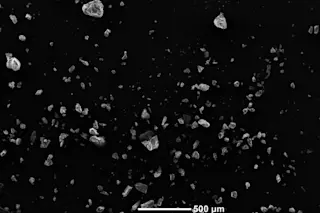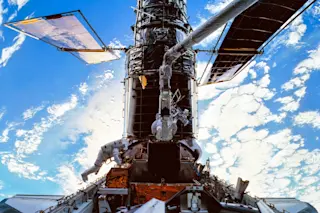Americans have known their share of emergencies in space, from Apollo 13 to the balky door on the space shuttle, but this past year on the Mir space station was a different matter altogether. The Russian cosmonauts and their American guests were subjected to so many problems, including potentially life-threatening fires and air-pressure leaks, that the year blurred into an ongoing crisis marathon.
In 1993, when the United States and Russia decided to cooperate on the new International Space Station, sending American scientist-astronauts on a study-abroad program aboard the trusty old Mir, which began operating in 1986, seemed like a good idea. Beyond learning how to keep fit in zero-g, it was hoped that the astronauts would imbibe the culture of long-term missions and, who knows, perhaps even acquire some of the Russians’ legendary imperturbability in the face of the unexpected. Aboard Mir, U.S. astronauts were told to mind their ...














